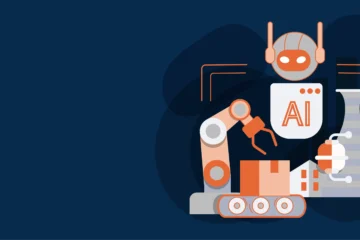1. Introduction – Why Software Security Is Critical
The digital economy runs on software, from enterprise platforms to personal applications. As reliance grows, attackers continue to focus on software vulnerabilities as their main doorway into sensitive systems. Even a small bug can become a launchpad for data breaches, ransomware incidents, and large-scale financial damage. Modern businesses cannot afford to treat software security as optional. Instead, they must adopt proactive, layered defenses to reduce risks, maintain compliance, and preserve customer trust.
2. Understanding Software Exploits and Threats
A software exploit is a technique that takes advantage of flaws or vulnerabilities within applications, operating systems, or services. These flaws allow attackers to manipulate normal functions, gain unauthorized access, or crash systems. Exploits come in different forms, such as buffer overflows that overwrite memory, SQL injections that manipulate database queries, or cross-site scripting (XSS) attacks that inject malicious code into websites.
It is important to distinguish between exploits, malware, and broader cyber threats. Exploits are the techniques or methods, while malware refers to the actual malicious programs deployed using these weaknesses. Broader threats include campaigns or strategies combining multiple exploits, malware, and social engineering tactics. This is why businesses need structured defenses that address not only malware but also the underlying software weaknesses that attackers exploit.
3. How Exploits Are Discovered and Used by Attackers
Many vulnerabilities are discovered by ethical researchers, but attackers also actively search for weaknesses. Zero-day vulnerabilities, which are flaws not yet patched by vendors, are particularly dangerous because they leave organizations with no immediate defense. Attackers often weaponize these flaws using exploit kits, which are automated tools designed to scan and attack systems at scale.
Dark web marketplaces have accelerated the spread of exploits, allowing cybercriminals to purchase ready-made tools instead of developing them from scratch. This accessibility lowers the barrier for entry into cybercrime, making it easier for less skilled attackers to launch sophisticated campaigns.
Businesses therefore need to embrace essential application security practices for businesses to close these gaps before they can be exploited. These practices, explained in depth by resources that focus on securing applications throughout their lifecycle, from development to deployment, ensure both resilience and trustworthiness.
4. Major Cyber Threats Targeting Software Today
Ransomware groups frequently exploit unpatched applications to infiltrate networks. Supply chain attacks, such as those that compromise trusted software updates, continue to grow because they allow attackers to piggyback on legitimate vendor channels. Insider misuse also poses risks, especially when employees exploit applications for personal gain or accidentally expose vulnerabilities. Advanced persistent threats (APTs) sponsored by nation-states add another layer of complexity, using exploits to conduct espionage and disrupt critical systems.
5. Consequences of Exploited Software Vulnerabilities
The fallout from exploited vulnerabilities is severe. Sensitive data, including customer information and intellectual property, can be stolen and sold. The financial impact extends beyond ransom payments or fraud, often including legal fees, regulatory penalties, and loss of market value. Businesses also face reputational harm, as customers may lose confidence in their ability to safeguard data. Additionally, operational downtime caused by compromised applications can paralyze entire organizations, disrupting supply chains and essential services.
6. Core Strategies for Safeguarding Software
6.1 Secure Development Practices
Developers must adopt secure coding standards that prevent common vulnerabilities. Integrating testing directly into development pipelines, known as DevSecOps, helps identify flaws early and ensures security remains a priority throughout the software lifecycle.
6.2 Regular Patching and Vulnerability Management
Timely updates close exploitable gaps. Automated patch management tools can streamline this process, ensuring that vulnerabilities do not remain open for attackers to exploit.
6.3 Identity and Access Controls
Strong authentication mechanisms, including multi-factor authentication, should be mandatory. Access should follow the principle of least privilege, limiting user permissions to only what is necessary.
6.4 Application Firewalls and Monitoring
Web Application Firewalls (WAFs) act as a shield against injection attacks and malicious requests. Continuous monitoring helps detect anomalies that could indicate ongoing exploitation.
6.5 Encryption and Data Protection
Encrypting data both at rest and in transit ensures that even if attackers exploit software, the stolen data remains useless without keys. This minimizes the impact of breaches.
7. Role of AI and Automation in Software Security
Artificial intelligence is playing a growing role in defending against exploits. AI-powered vulnerability scanners can identify risks faster than manual reviews, while predictive threat models can anticipate attack techniques before they occur. Automated response systems also help reduce dwell time, isolating compromised systems within minutes instead of days. According to IBM Security, AI-driven defenses are becoming indispensable in reducing human workload and improving response efficiency.
8. Industry-Specific Risks and Approaches
Finance must defend against exploits targeting online banking applications, where attackers aim to steal funds or customer credentials. Healthcare systems face risks to electronic health records and connected medical devices, making patient privacy a critical concern. Retail organizations depend on secure e-commerce applications to prevent fraud and maintain customer trust. Governments, meanwhile, must safeguard critical infrastructure and citizen data, as these targets often attract sophisticated nation-state attacks.
9. Challenges in Software Security
Enterprises struggle with a shortage of skilled cybersecurity professionals capable of managing complex defenses. Costs associated with layered protection can be high, creating challenges for small businesses. Hybrid and multi-cloud environments add another layer of complexity, with applications spread across multiple platforms and vendors. Balancing user convenience with strong security controls is another ongoing challenge, as overly strict systems can hinder productivity.
10. Best Practices for Long-Term Protection
Long-term resilience requires ongoing commitment. Regular penetration testing and code audits identify weaknesses before attackers can exploit them. Developers and staff need consistent training to stay ahead of evolving threats. Leveraging threat intelligence ensures organizations gain insights into attacker behavior and emerging risks. Partnering with managed security service providers, as highlighted by CSO Online, helps businesses fill resource gaps and strengthen defenses.
11. Conclusion – Building Software Resilience
Software vulnerabilities are a prime target for cybercriminals, making application security one of the most pressing concerns of the digital age. By combining secure development, continuous monitoring, and AI-driven tools, organizations can drastically reduce risks. Businesses that make software defense a strategic priority will not only safeguard sensitive data but also ensure long-term resilience and trust.
Frequently Asked Questions
1. What is the difference between a vulnerability and an exploit?
A vulnerability is a flaw in software, while an exploit is the technique used to take advantage of that flaw.
2. How often should businesses patch their applications?
Patching should be continuous, with critical updates applied as soon as vendors release them. Automated patch management systems help reduce delays.
3. Can AI completely replace human oversight in software security?
AI improves detection and response but cannot fully replace human judgment. Combining automation with expert analysis offers the strongest protection, as explained by Microsoft Security.



